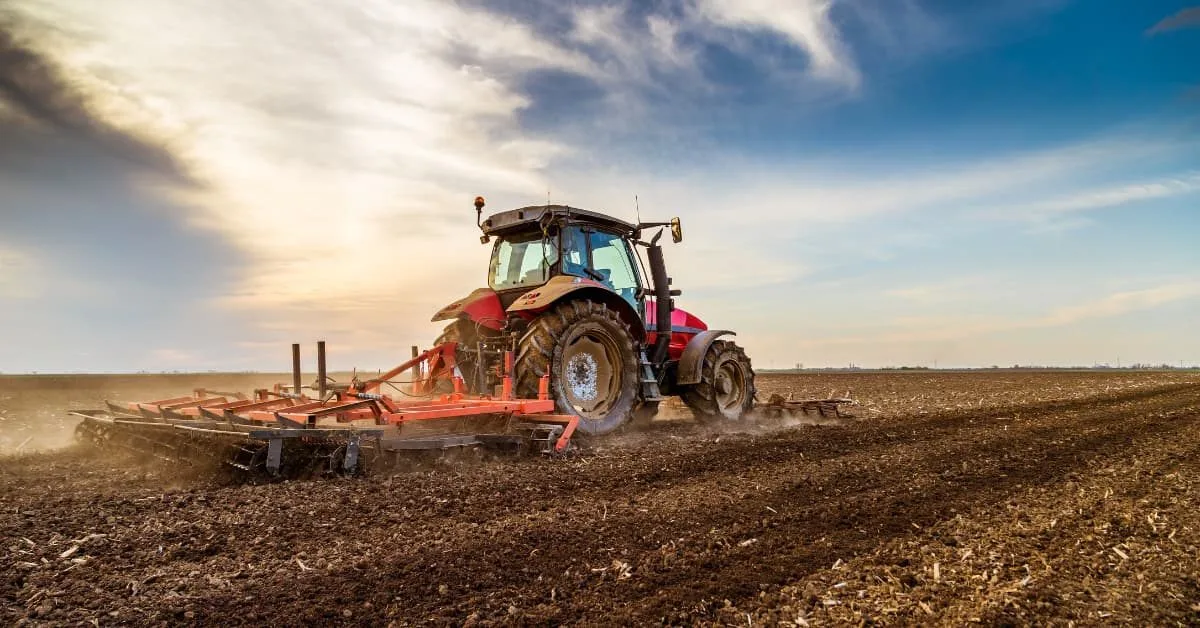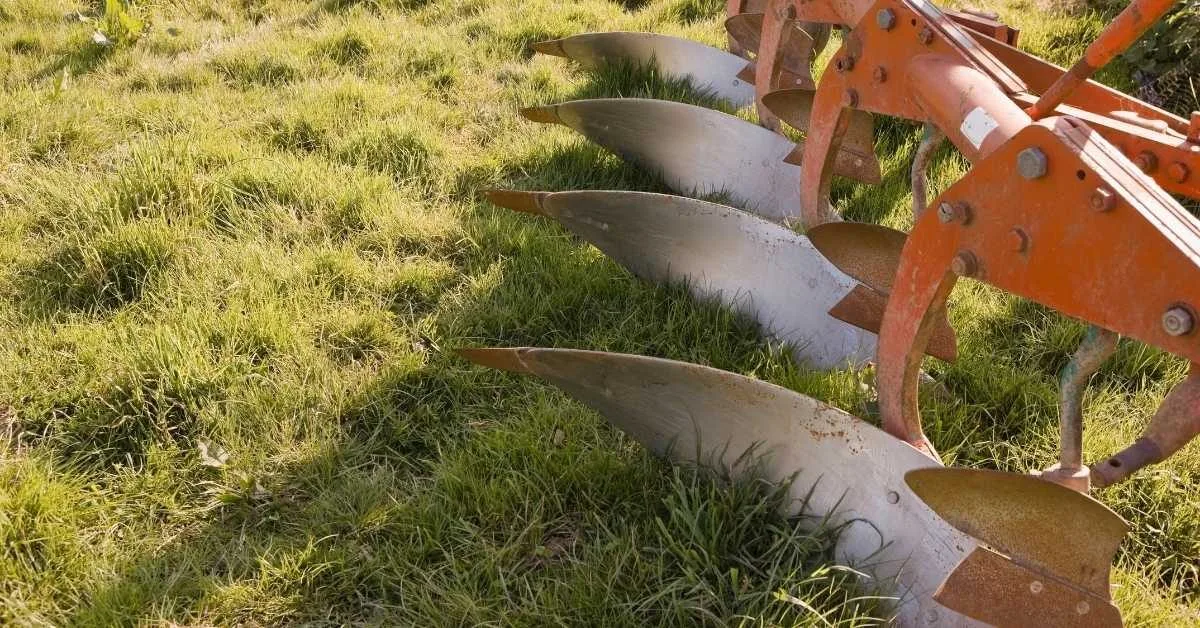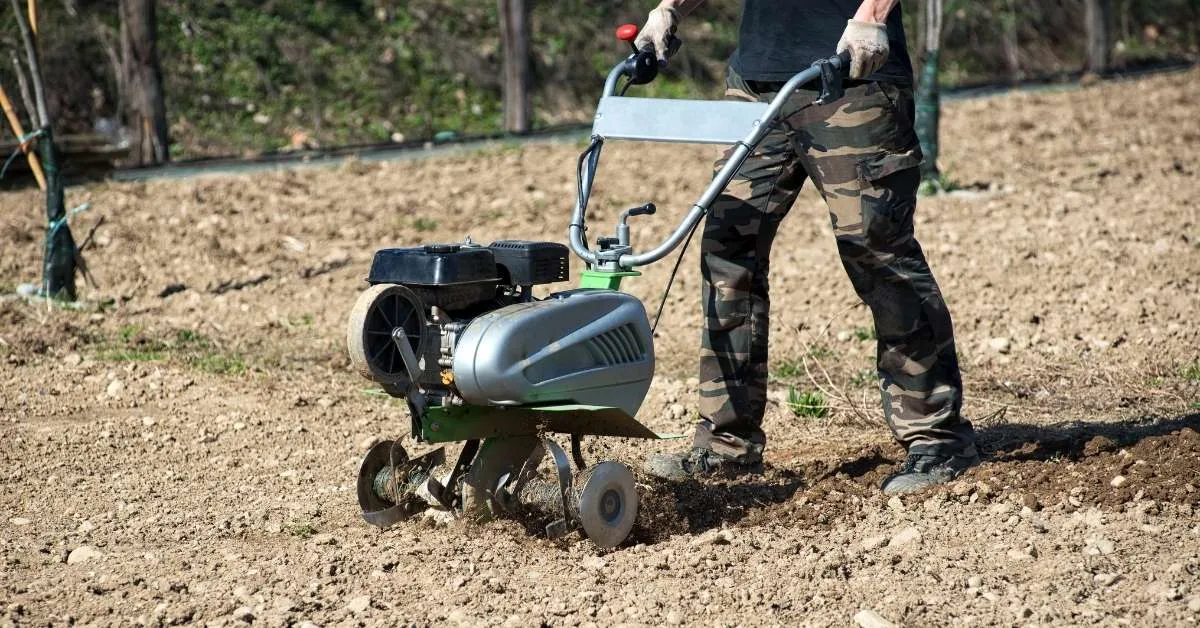At Agrícola Navarro, we have been manufacturing agricultural spare parts for soil preparation for decades, and we know how important it is to have reliable tools that guarantee good performance in the field.
And when it comes to rotovators, the blades play a fundamental role.
Their shape, the type of steel they are made of and their compatibility with the rotovator model can make the difference between an efficient job or a waste of time and resources.
In this article we want to help you understand what types of blades are available, how to choose the most suitable ones for the type of terrain and what factors influence their durability and performance.
Whether you are looking for rotovator blades, want to improve the performance of your machinery or simply need technical guidance, here you will find all the information you need from our experience as manufacturers.
What are rotovator blades and why is it important to choose the right one?
Rotovator blades are metal parts designed to work the soil by means of a rotating system. As they rotate, these blades penetrate the soil and break it up, facilitating work such as sowing, fertilising or preparing land for subsequent crops. They are a key component of the rotovator, and their performance is directly linked to the quality of the work carried out in the field.
Choosing the right type of blade is not a minor decision. An unsuitable model can lead to premature wear, poor soil finish or even damage to the machine.
For this reason, it is essential to take into account aspects such as the type of soil, the crop to be sown, compatibility with the machinery and the materials from which the blade is made.
In Agrícola Navarro we manufacture a wide variety of models adapted to different brands and needs. You can consult all our available spare parts in the product section or go directly to the complete catalogue for technical references.
Types of rotovator blades and their differences
Not all rotovator blades are the same. There are different types designed to suit specific terrain, weather conditions, crops or even tractor power.
Choosing the right shape not only improves the quality of work, but also extends the life of the replacement and optimises fuel consumption.
Here we explain the main blade shapes currently used in the agricultural sector and when to use each one.
L, C and J blades: which one to choose depending on the type of terrain?
Rotovator blades are generally classified into three main groups according to their shape: L-type, C-type and J-type. Each is designed for a specific type of terrain and work:
- L-type blades: these are the most common. Their straight, angular design allows them to work efficiently on light or medium-textured soils. They are ideal for shallow work and soils that have already been previously worked.
- C-type blades: they have a more curved shape, which improves penetration in hard or compacted soils. They are more resistant and better adapted to difficult terrain, providing greater cutting and soil lifting capacity.
- J-type blades: they have a more closed and narrower shape, perfect for clayey or wet soils. Their design helps prevent clogging and facilitates soil ejection during turning.
Making the right choice between these types is essential for efficient work, especially if you are looking for good results with minimum effort and wear on the machine.
| Blade Type | Design | Recommended Terrain | Main Advantages |
|---|---|---|---|
| Type L | Straight and angular | Light or previously worked soils | Versatility and good surface performance |
| Type C | Curved | Hard or compacted soils | Greater penetration and durability |
| Type J | Narrow and closed | Wet or clay soils | Prevents clogging, facilitates soil ejection |
Straight vs. helical blades
Another important classification is the distinction between straight blades and helical blades.
- Straight blades are simpler in design, tend to be less expensive and are a good choice for basic or shallow work. However, they tend to offer less pulling power in heavy soils.
- Helical blades, on the other hand, have a curved shape that generates a progressive and continuous cutting effect. This type of blade is more efficient in compacted soils and significantly improves ground finish. It also reduces vibration and stress on the machine, resulting in less wear and smoother operation.
| Feature | Straight blades | Helical blades |
|---|---|---|
| Design | Simple line, straight edge | Progressive curvature, spiral shape |
| Soil type | Light soils, shallow work | Compacted, heavy or tough soils |
| Cutting efficiency | Lower pulling capacity | Cleaner and more consistent cut |
| Vibrations | Harsher contact with the soil | Reduced vibrations during operation |
| Machine wear | Greater engine effort | Lower effort and better energy efficiency |
| Cost | More affordable | Slightly higher investment, but more durable |
| Soil finish | Suitable for basic work | Better and more uniform finish |
Compatibility with brands: Pasquali, Howard, Kubota and more
In Agrícola Navarro we manufacture blades compatible with a wide variety of brands, including Pasquali, Howard, Kubota, Agrator, Lander, among others.
Each rotovator has specific dimensions and shapes, so it is important to select the right model to ensure the perfect fit and avoid problems during assembly or use.
If you are not sure which blade your machine needs, in our catalogue you can find all the references organised by brand and model. And if you prefer a more personalised service, you can contact us and we will help you identify the exact part you need.
Materials and treatments that make the difference
In addition to the design of the blade, the material it is made of and the treatment it receives during production are two decisive factors for its durability, elasticity and resistance to wear.
At Agrícola Navarro we are committed to quality right from the start, using selected steels and certified manufacturing processes that guarantee the best performance in real working conditions.
Boron steel and its resistance
All our rotovator blades are made of boron steel, a type of alloy steel that includes a small amount of this chemical element in order to increase hardness and impact resistance without losing elasticity.
Thanks to boron, the blades withstand repeated knocks, abrasion caused by stones or plant debris, and sudden changes in temperature better. This means longer working hours without the need for constant replacement or sharpening.
Compared to other less resistant materials, boron steel provides a clear advantage in terms of long-term performance and cost, especially in demanding tasks or on difficult soils.
Heat and cryogenic treatments: how do they improve performance?
To maximise the properties of the steel, we apply a controlled heat treatment process, which allows us to harden the blade in the cutting zone without making it brittle. In this way, we achieve a perfect balance between hardness and flexibility, which prevents the blade from deforming or splitting easily.
On some models, we also perform cryogenic treatments, which consist of exposing the metal to extremely low temperatures to reorganise its internal structure. This procedure increases wear resistance and improves dimensional stability, extending the life of the blade even under intensive use.
Both treatments, together with the use of boron steel, are part of our commitment to quality. It is not just a question of offering compatible spare parts, but of guaranteeing a product that responds reliably to every working day.
Maintenance of blades for rotovator: practical tips
Good maintenance not only extends the life of the blades, but also ensures a more efficient and safe work. Although quality blades, such as those we manufacture in Agrícola Navarro, are designed to last, the continued use in demanding conditions makes it necessary to perform periodic reviews and some basic care tasks.
Here we share with you some practical recommendations that we apply on a daily basis and that can help you get the most out of your machinery.
When to replace the blades
Although there is no exact rule, there are signs that clearly indicate that it is time to replace the blades of the rotovator:
- Visible edge wear or loss of shape.
- Shallower working depth or uneven results on the ground.
- Abnormal vibrations during use.
- Increased strain on the tractor, resulting in higher fuel consumption.
In general, if you notice that you need more passes to achieve the same result, or if the ground finish has worsened, it is most likely that the blades are worn. In our product section you can find all the spare parts available for a guaranteed replacement.
How to sharpen rotovator blades
Sharpening the blades allows you to regain some of the performance without having to change them. This process must be done carefully so as not to alter the balance of the part or compromise its hardness.
- Use an angle grinder with a disc suitable for metal.
- Hold the blade securely and maintain the original angle of the cutting edge.
- Grinding should be uniform at both ends to avoid vibrations.
- Avoid overheating the metal during sharpening, as this may damage the heat treatment.
Wear protective gloves and goggles whenever possible. If the blades are cracked or deformed, it is best to replace them.
Recommended RPM and how to avoid clogging
The rotation speed also has a direct influence on the durability and final result of the work. For most rotovators, it is recommended to maintain a speed of 540 RPM, adjusting the tractor gear so that it is neither too slow nor too fast (between 2 and 4 km/h, depending on the type of terrain).
To avoid clogging, especially in wet or clay soils:
- Choose blades suitable for the type of soil (e.g. type J for sticky soils).
- Avoid working when the ground is too wet.
- Clean the blades thoroughly after each use and check that there are no hardened debris preventing them from turning freely.
Following these recommendations not only improves the work result, but also protects the machine and reduces costs in the long run.
Where to buy quality blades for your rotovator?
When it comes to buying replacement blades for your rotovator, it’s not just about finding a blade that fits, it’s about making sure that the replacement blade offers strength, durability and reliability.
The wrong choice can directly affect the performance of your work in the field, cause unnecessary breakdowns or mean you’ll have to replace the part in no time at all.
What to consider before buying
Before choosing a blade, it is advisable to check the following aspects:
- Compatibility: make sure the model is compatible with your brand and type of rotovator (Pasquali, Howard, Kubota, etc.).
- Type of terrain: not all blades work equally well on hard, clayey or light soils.
- Steel quality: boron steel is much stronger than other common alloys.
- Treatments applied: look for products that include heat or cryogenic treatments, as these significantly improve service life..
- Manufacturing guarantee: choose brands or manufacturers that can demonstrate experience and control in their production processes.
Why trust in a specialised manufacturer
At Agrícola Navarro we have been manufacturing spare parts for agricultural, gardening and public works machinery for over 55 years.
Our business philosophy is based on always offering uncompromising quality: we work with top quality boron steels, we apply rigorous heat treatments and we take care of every manufacturing detail to ensure maximum durability and resistance in the field.
Our factory is equipped with our own flexible production lines, which allows us to adapt to the needs of each customer. In addition, we guarantee fast delivery times, with immediate stock availability and more than 1200 active references.
As specialists in the sector, we offer you all our technical knowledge. If you want to know more about who we are, we invite you to visit our company section. And if you need help in choosing the right blade for your rotovator, you can write to us directly from our contact form.
Trust, quality and personalised advice
Choosing the right blades for your rotovator is a key decision to ensure efficient, long-lasting and safe work in the field. Throughout this article we have reviewed the different types of blades, their applications depending on the type of terrain, the most resistant materials and the necessary care to prolong their useful life.
At Agrícola Navarro we have more than 55 years of experience in the manufacture of agricultural spare parts, using 100% Spanish raw materials and our own highly controlled processes. Our priority is to guarantee the highest quality in each piece, from the selection of the steel to the final finish.
If you need help to identify the blade that best suits your machinery, you can consult our complete catalogue or contact us directly.
We will be happy to help you.
Frequently Asked Questions
Can I use the same blades for hard and soft soils?
It’s not recommended. Each type of blade is designed for specific soil conditions. For example, Type C performs better on hard and compacted soils, while Type L is more effective on light or previously worked soils.
How can I tell if my blades are worn out?
There are several clear signs of wear. If the edge is rounded, the soil isn’t well tilled, or the tractor vibrates more than usual, it’s time to replace them.
What happens if I use incompatible blades?
Using incompatible blades can lead to serious issues. From poor performance in the field to potential damage to the machine or parts near the shaft.
Is it better to sharpen the blades or replace them directly?
It depends on the blade’s condition. If it still retains its shape and structure, sharpening might be enough. If it’s deformed, replacement is the better option.
What basic maintenance do you recommend after each use?
A simple routine can make a big difference. Clean the blades, check for embedded debris, and store the machine in a dry place to prevent rusting.



